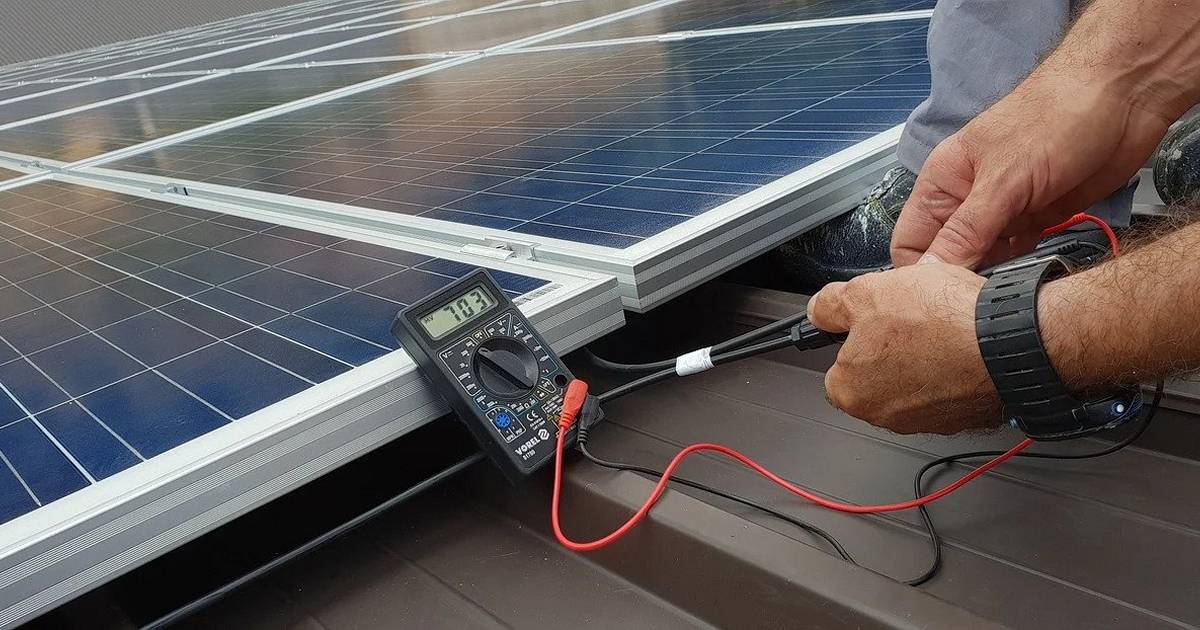Boost your home’s appraisal with insights from energy testing north carolina
Boost your home’s appraisal with insights from energy testing north carolina
Blog Article
The Role of Energy Testing in Achieving an Airtight Solution for Your Building
Power testing is crucial for building proprietors seeking to produce a closed atmosphere. It determines air leakages and ineffectiveness that can endanger energy performance. Common culprits consist of voids around doors and home windows. Making use of techniques like blower door examinations and thermal imaging, home owners can get insights right into their building's vulnerabilities (energy testing). Comprehending these searchings for is vital. What steps should be taken as soon as air leaks are determined? The responses hold the secret to enhanced comfort and financial savings
Understanding Energy Screening and Its Relevance
Energy testing plays a crucial role in reviewing the airtightness of buildings and structures. By gauging air leakage, this method supplies critical insights right into a residential property's energy effectiveness, thermal convenience, and total efficiency. Airtight structures decrease power intake, guaranteeing that cooling and heating systems operate effectively. This screening procedure generally involves methods such as blower door examinations, which produce a regulated atmosphere to determine unplanned air pathways.Understanding the importance of energy testing prolongs beyond compliance with building regulations; it promotes a positive technique to sustainability. Determining air leakages early can result in prompt remediation, inevitably improving interior air high quality and lowering energy prices. Additionally, energy testing adds to the long life of structure products by lessening wetness accumulation and relevant damage. As understanding of environmental impact boosts, power screening becomes an important device for house owners and building contractors going for high-performance properties.
Common Resources of Air Leaks in Quality
Determining usual resources of air leakages is crucial for enhancing a residential property's power effectiveness. These leaks often take place in various areas of a building, significantly affecting heating and cooling expenses. Usual wrongdoers include spaces around doors and windows, where seals might degrade gradually. Additionally, electric outlets and buttons can create paths for air exchange otherwise correctly shielded. Attic rooms and cellars are also frequent resources, particularly where walls satisfy the structure or the roofing. Various other prospective leakage factors consist of pipes penetrations, airing vent systems, and the areas bordering smokeshafts. Older homes might suffer from deteriorated structure products, increasing susceptability to air seepage. By recognizing these common sources, home owners can take positive steps to seal leakages, therefore boosting total energy effectiveness and convenience within their spaces. Resolving these issues is an important part of establishing an airtight service for any residential property.
Techniques of Energy Testing: Blower Door and Thermal Imaging
Efficient energy testing techniques, such as blower door tests and thermal imaging, play an essential function in identifying air leakages within a home. The blower door examination entails pressurizing or depressurizing a building to gauge airflow and determine leaks. A calibrated fan is installed in an outside doorway, and the resulting pressure difference highlights areas of undesirable air infiltration. This approach quantifies the general airtightness of the structure.Thermal imaging matches blower door examinations by visually finding temperature variations on surface areas, revealing hidden air leaks. Infrared video cameras capture warmth loss or gain, permitting for accurate recognition of problem locations, such as inadequately protected walls or spaces around home windows and doors. energy testing south carolina. Together, these techniques give an extensive analysis of a building's power performance, allowing residential or commercial property proprietors to deal with air leaks successfully and improve overall efficiency
Benefits of Identifying Air Leaks
Recognizing air leaks supplies significant benefits for energy performance and indoor comfort. By sealing these leakages, structures can reduce energy intake, bring about lower energy expenses and a decreased carbon footprint. In addition, improved airtightness adds to a much more stable interior environment, boosting overall comfort for owners.
Energy Effectiveness Improvements
Discovering air leakages is important for boosting power efficiency in buildings. Recognizing these leaks allows property owners to attend to locations where conditioned air escapes or unconditioned air goes into, bring about significant energy cost savings. By securing cracks and spaces, structures can keep a consistent temperature, minimizing the need on heating and cooling systems. This not just decreases power expenses yet additionally minimizes the environmental effect connected with boosted energy consumption. Additionally, energy efficiency enhancements add to a structure's total sustainability, making it an extra eye-catching option for eco-conscious buyers or tenants. Ultimately, prioritizing air leakage detection and remediation helps enhance energy usage, advertises responsible source administration, and supports long-term financial advantages for home proprietors.

Boosted Indoor Comfort
Addressing air leaks not just results in power cost savings however also significantly boosts interior convenience. When air leaks are properly determined and sealed, temperature level policy within a home becomes more efficient. This causes regular indoor temperatures, getting rid of cold drafts check this site out in winter months and hot places in summer. Enhanced insulation additionally reduces sound pollution from outdoors, developing a quieter and even more tranquil living atmosphere. Furthermore, enhanced air quality is achieved by reducing the infiltration of outdoor pollutants, allergens, and moisture, adding to the total health of passengers. Home owners experience an even more pleasurable environment, promoting relaxation and performance. Inevitably, acknowledging and remedying air leaks is important for achieving ideal indoor comfort throughout the year.
Just How Power Testing Improves Convenience and Indoor Air Top Quality
Energy testing plays an essential duty in improving temperature law within interior spaces, ensuring a comfy and constant environment. By sealing and determining air leaks, it likewise significantly lowers the seepage of pollutants, therefore enhancing interior air high quality. This dual effect promotes overall health for owners.
Improved Temperature Policy
Reliable temperature regulation substantially adds to both comfort and indoor air quality, making it an important emphasis for modern building design. Power screening plays a vital duty in achieving this policy by recognizing areas where warmth loss or gain happens, permitting targeted renovations. By making certain an impermeable building envelope, energy screening aids maintain constant indoor temperature levels, decreasing the need for too much home heating or cooling. This security improves owner comfort, as fluctuations in temperature level can cause discomfort and frustration. Additionally, efficient temperature level control can enhance indoor air high quality by decreasing the threat of condensation and mold development, which flourish in unequal temperature problems. Power screening is necessary for maximizing temperature management in business and property buildings. Industrial Decreased Toxin Seepage
While many factors add to interior air high quality, reduced toxin infiltration attracts attention as an essential element that energy screening can substantially boost. Energy testing recognizes air leaks and weak points in a structure's envelope, which may allow exterior contaminants, allergens, and dampness to go into indoor rooms. By sealing these leakages, residential or commercial properties can efficiently restrict airborne impurities, causing a healthier setting. Enhanced airtightness not only boosts comfort yet likewise minimizes the burden on home heating and cooling systems, resulting in power financial savings. Furthermore, decreased pollutant infiltration promotes better total wellness for passengers, as cleaner air advertises respiratory health and wellness and lowers allergy signs and symptoms. Power testing plays a critical function in creating both an energy-efficient and health-conscious living room.
The Financial Effect of Energy Screening on Utility Costs

Actions to Take After Power Screening Outcomes
Once power testing results are in, house owners must carefully assess the findings to figure out the most efficient path forward. The primary step entails recognizing the locations that call for improvement, such as air leakages or insulation deficiencies. Homeowners must then prioritize fixings based on the intensity of the concerns and their possible influence on power efficiency.Next, it is suggested to seek advice from with experts who concentrate on energy effectiveness to design a comprehensive action strategy. This might consist of services like securing spaces, adding insulation, or updating home windows and doors.After executing the essential adjustments, a follow-up power test can establish the efficiency of the repair work. Constant monitoring is additionally necessary to ensure that the building keeps its impermeable standing in time. By following these actions, house owners can considerably enhance their property's power efficiency, causing minimized utility expenses and improved convenience.
Frequently Asked Inquiries
How Commonly Should I Conduct Power Evaluating on My Property?
The frequency of power testing need to usually be every couple of years, or complying with substantial remodellings. Normal assessments aid identify effectiveness improvements and ensure that the residential or commercial property keeps perfect power efficiency over time, adjusting to changing problems.
Is Power Testing Necessary for New Constructions?
Energy screening is essential for new building and constructions, as it identifies prospective air leak and insulation concerns Your Domain Name - energy testing south carolina. Applying these tests guarantees energy performance, boosts indoor convenience, and fulfills building regulations, ultimately causing lasting cost savings
Can I Carry Out Power Screening Myself?
Power screening typically requires specific devices and knowledge. While some home owners may attempt basic evaluations, expert solutions assure accurate results and efficient identification of concerns, eventually resulting in much better power efficiency and comfort in living spaces.
What Is the Expense of Specialist Power Screening Solutions?
The expense of specialist energy testing solutions typically varies from $300 to $1,500, relying on residential or commercial property intricacy, size, and location. Property owners should think about possible energy cost savings when examining the financial investment in these solutions.
The Length Of Time Do Energy Screening Outcomes Generally Last?
Energy screening results usually stay legitimate for one to 3 years, relying on factors like building modifications and ecological changes. Normal updates are suggested to guarantee accuracy and keep effective power performance standards. Effective energy screening approaches, such as blower door tests and thermal imaging, play a crucial role in identifying air leaks within a property. Recognizing these leaks permits residential or commercial property proprietors to attend to areas where conditioned air gets away or unconditioned air enters, leading to substantial power savings. Energy screening determines air leaks and weak factors in a building's envelope, which may allow outdoor toxins, allergens, and dampness to get in indoor spaces. As home owners increasingly seek to reduce their energy expenses, the role of energy testing becomes crucial in determining leaks and inefficiencies. House owners should after that focus on repair work based on the pop over here extent of the problems and their prospective impact on energy efficiency.Next, it is suggested to seek advice from with specialists that specialize in power efficiency to devise a complete action strategy.
Report this page